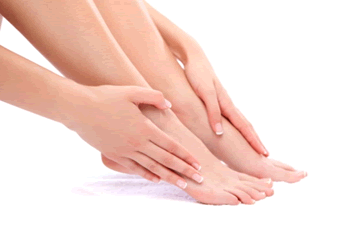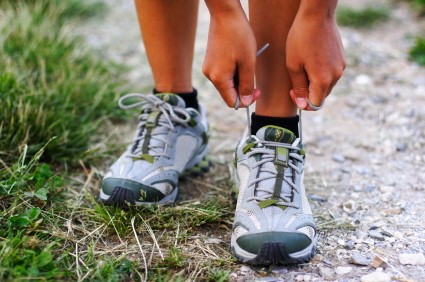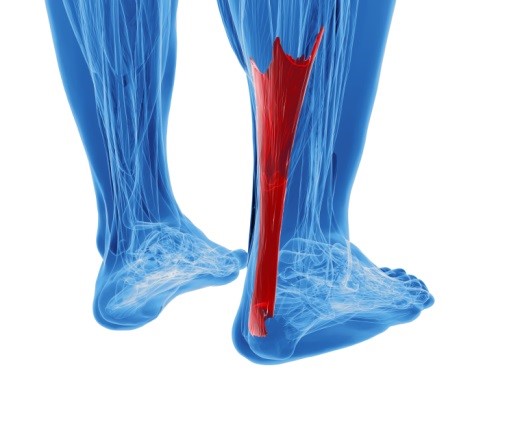 A recent study conducted by the Arthritis Care & Research suggests that smoking or cigarette smoke may possibly lead to lower gout risks. The research indicates, however, that this “27% lower risk” benefit was noted only in men who were lean, non-overweight smokers. Urate levels in the test subjects were “significantly lower” than those who were previous smokers or who have never smoked. Research has never before been done on the correlation between gout and smoking, and the results are new and inconclusive.
A recent study conducted by the Arthritis Care & Research suggests that smoking or cigarette smoke may possibly lead to lower gout risks. The research indicates, however, that this “27% lower risk” benefit was noted only in men who were lean, non-overweight smokers. Urate levels in the test subjects were “significantly lower” than those who were previous smokers or who have never smoked. Research has never before been done on the correlation between gout and smoking, and the results are new and inconclusive.
Gout is a foot condition that requires certain treatment and care. Seek the assistance of one of our podiatrists from Southeast Podiatry. Our doctors will provide the care you need to keep you pain free and on your feet.
What is Gout?
Gout is a type of arthritis caused by a buildup of uric acid in the bloodstream. It often develops in the foot, especially the big toe area, although it can manifest in other parts of the body as well. Gout can make walking and standing very painful and is especially common in diabetics and the obese.
People typically get gout because of a poor diet. Genetic predisposition is also a factor. The children of parents who have had gout frequently have a chance of developing it themselves.
Gout can easily be identified by redness and inflammation of the big toe and the surrounding areas of the foot. Other symptoms include extreme fatigue, joint pain, and running high fevers. Sometimes corticosteroid drugs can be prescribed to treat gout, but the best way to combat this disease is to get more exercise and eat a better diet.
If you have any questions, please feel free to contact one of our offices located in Fairhope, Brewton, and Atmore, AL. We offer the newest diagnostic and treatment technologies for all your foot care needs.
Gout, typically found in diabetic patients, is an unusually painful form of arthritis caused by elevated levels of uric acid in the bloodstream. The condition typically strikes the big joint on the big toe. It has also been known to strike the knees, elbows, fingers, and wrists—generally anywhere that has a functioning, moving joint.
The high level of uric acid in a person’s bloodstream creates the condition known as hyperuricema—the main cause of gout. Genetic predisposition occurs in nine out of ten sufferers. The children of parents who suffer gout will have a two in ten chance of developing the condition as well.
This form of arthritis, being particularly painful, is the leftover uric acid crystallizing in the blood stream. The crystallized uric acid then travels to the space between joints where they rub, causing friction when the patient moves. Symptoms include: pain, redness, swelling, and inflammation. Additional side effects may include fatigue and fever, although reports of these effects are very rare. Some patients have reported that pain may intensify when the temperature drops, such as when you sleep.
Most cases of gout are easily diagnosed by a podiatrist’s assessment of the various symptoms. Defined tests can also be performed. A blood test to detect elevated levels of uric acid is often used as well as an x-ray to diagnose visible and chronic gout.
Treatment for gout simply means eliminating symptoms. Non-steroid anti-inflammatory drugs or NSAIDs (Colchicine and other corticosteroid drugs, etc.) will quell the redness, the swelling, and the inflammation. However, managing your diet, lifestyle changes, and using preventative drugs are all helpful toward fully combating the most severe cases.
Those that lead an inactive lifestyle are at a higher risk for gout. Any amount of exercise decreases the probability of repeat encounters with the condition. Reducing your consumption of red meat, sea food, and fructose-sweetened drinks also reduces the likelihood of chronic gout as well.
Ingesting Vitamin C, coffee, and particular dairy products can help with maintaining a healthy lifestyle. There are new drugs out on the market that inhibit the body’s production of uric acid-producing enzymes. However, reducing or eliminating your overall levels of uric acid is the best remedy to ensuring you lead a gout-free life.
 Finding the right shoe size is pertinent to one’s foot health. Shoes that are too tight can irritate the feet and create blisters or calluses; shoes that are too loose can also cause tripping. When trying on shoes ensure that you select a pair that has solid foot support, sufficient toe room, and either laces or velcro if you intend to exercise in it.
Finding the right shoe size is pertinent to one’s foot health. Shoes that are too tight can irritate the feet and create blisters or calluses; shoes that are too loose can also cause tripping. When trying on shoes ensure that you select a pair that has solid foot support, sufficient toe room, and either laces or velcro if you intend to exercise in it.
Getting the right shoe size is an important part of proper foot health. Seek the assistance of one of our podiatrists from outheast Podiatry. Our doctors will provide the care you need to keep you pain free and on your feet.
Getting the Right Shoe Size
There are many people that wear shoes that are ill-fitting, which affects their feet and posture. Selecting the right shoes is not a difficult process so long as you keep several things in mind when it comes to selecting the right pair.
As our feet hold our body weight and keep us moving, it is important to treat your feet right by choosing the right pair of shoes that can provide them comfort and mobility with minimal pain.
If you have any questions, please feel free to contact one of our offices located in Fairhope, Brewton, and Atmore, AL. We offer the newest diagnostic and treatment technologies for all your foot care needs.
Are your shoes the right size? Many people are walking around with ill-fitting shoes. Picking the right shoe size is not rocket science, but there are a few things to remember when selecting your next pair.
Most shoe stores and department stores have rulers for measuring your feet, and these can give you an exact size. Be sure to measure with your shoe on. Measuring your foot will give you a different size than your shoe. If you do measure your foot size, you will need to add 1-2 inches to get the proper sizing.
Wiggle room is the most important factor when selecting shoes. Make sure that your toes are not cramped and that you can wiggle them. A rule of thumb is that there should be one inch between your toes and the tip of your shoe. If your shoes are not properly sized, you can experience foot pain, knee pain, blisters and swelling.
Don’t assume that you will always wear the same size in a shoe. Often manufacturers size shoes differently. The size you wear with one company may not be the same as the size you wear with another. Make sure that the company you buy from has a return policy. No one needs a closet full of shoes which they cannot wear.
It is advisable not to buy your shoes in the morning, but rather late in the day. Your feet actually swell as the day goes on and you need plenty of room to walk comfortably. Buying shoes in the morning that are snug is sure to cause problems once the day is done. Also, make sure that you are buying the right sizes for both feet. It is not uncommon for one foot to be larger than the other, and some people have to buy two separate sizes to accommodate different sized feet.
The biggest concern in buying shoes is comfort. Oftentimes people will buy shoes that are not the most comfortable in the store. People think that the shoes simply need to be “broken in”. If a shoe does not fit in the store, it will not fit at home either. Comfort should be the ultimate goal when purchasing a pair of shoes; your feet will thank you.
Let’s face it; we all walk a lot, some of us more than others. Selecting the best shoes for your particular lifestyle is essential. By properly sizing your shoes and buying the proper comfort level, your feet will be dancing all day long.
 If you are always on your feet, heel pain may be a common occurrence. Changing your fitness routine or putting on a few pounds can also add pressure to the feet, resulting in heel pain. Discomfort in the feet should never be overlooked, but heel pain can often be resolved through stretching. Properly flexing and exercising the muscles in your lower extremity can strengthen and protect your heels and other areas of the foot from future pain.
If you are always on your feet, heel pain may be a common occurrence. Changing your fitness routine or putting on a few pounds can also add pressure to the feet, resulting in heel pain. Discomfort in the feet should never be overlooked, but heel pain can often be resolved through stretching. Properly flexing and exercising the muscles in your lower extremity can strengthen and protect your heels and other areas of the foot from future pain.
Anyone can wind up suffering from heel pain. Seek the assistance of one of our podiatrists from Southeast Podiatry. Our doctors will provide the care you need to keep you pain free and on your feet.
Causes of Heel Pain
● Heel pain is often associated with plantar fasciitis. The plantar fascia is a band of tissues that extends along the bottom of the foot. A rip or tear in this ligament can cause inflammation of the tissue.
● Achilles tendonitis is another cause of heel pain. Inflammation of the Achilles tendon will cause pain from fractures and muscle tearing. Lack of flexibility is also another symptom.
● Heel spurs are another cause of pain. When the tissues of the plantar fascia undergo a great deal of stress, it can lead to ligament separation from the heel bone, causing heel spurs.
Why Might Heel Pain Occur?
- Wearing ill-fitting shoes
- Wearing non-supportive shoes
- Weight change
- Excessive running
Treatments
Heel pain should be treated as soon as possible for immediate results. Keeping your feet in a stress free environment will help. If you suffer from Achilles tendonitis or plantar fasciitis, applying ice will reduce the swelling. Stretching before an exercise like running will help the muscles. Using all these tips will help make heel pain a thing of the past.
With the advancements in technology and greater knowledge of how muscles and joints work, physical therapists can turn things around dramatically.
If you have any questions, please feel free to contact one of our offices located in Fairhope, Brewton, and Atmore, AL. We offer the newest diagnostic and treatment technologies for all your foot care needs.
Heel pain is a stressful condition that affects day to day activities. Running and walking both causes stress on the heel because the heel is the part of the foot that hits the ground first. This means that the heel is taking on your entire weight. Diagnosis and treatments for heel pain can be easily found through your podiatrist.
One of the main causes of heel pain is a condition known as plantar fasciitis. The plantar fascia is a band of tissue that extends along the bottom of the foot, from the toe to the bottom of the heel. A rip or tear in this ligament can cause inflammation of these tissues, resulting in heel pain. People who do not wear proper fitting shoes are often at risk of developing problems such as plantar fasciitis. Unnecessary stress from ill-fitting shoes, weight change, excessive running, and wearing non-supportive shoes on hard surfaces are all causes of plantar fasciitis.
Achilles tendonitis is another cause of heel pain. Similar to plantar fasciitis, inflammation of the Achilles tendon will cause heel pain due to stress fractures and muscle tearing. A lack of flexibility of the and heel is an indicator of Achilles tendonitis. If left untreated, this condition can lead to plantar fasciitis and cause even more pain on your heel.
A third cause of heel pain is a heel spur. A heel spur occurs when the tissues of the plantar fascia undergo a great deal of stress, leading to a separation of the ligament from the heel bone entirely. This results in a pointed fragment of bone on the ball of the foot, known as a heel spur.
Treatments for heel pain are easy and effective as long as problems are addressed quickly. The most common solution is simply taking stress off the feet, particularly off of the heel. This will ease the pain and allow the tendons and ligaments to relax. In the case of both plantar fasciitis and Achilles tendonitis, icing will reduce swelling of any part of the foot and anti-inflammatory medication is highly recommended. Properly fitting your shoes and wearing heel pads or comfort insoles will also reduce the risk of developing heel pain. Stretching before and after exercises such as running will help the foot muscles prepare for stress and lower the chances of inflammatory pain. In extreme cases, relieving heel pain might require surgery. Always make sure to discuss these symptoms and treatment options with your podiatrist to keep yourself active and pain free.